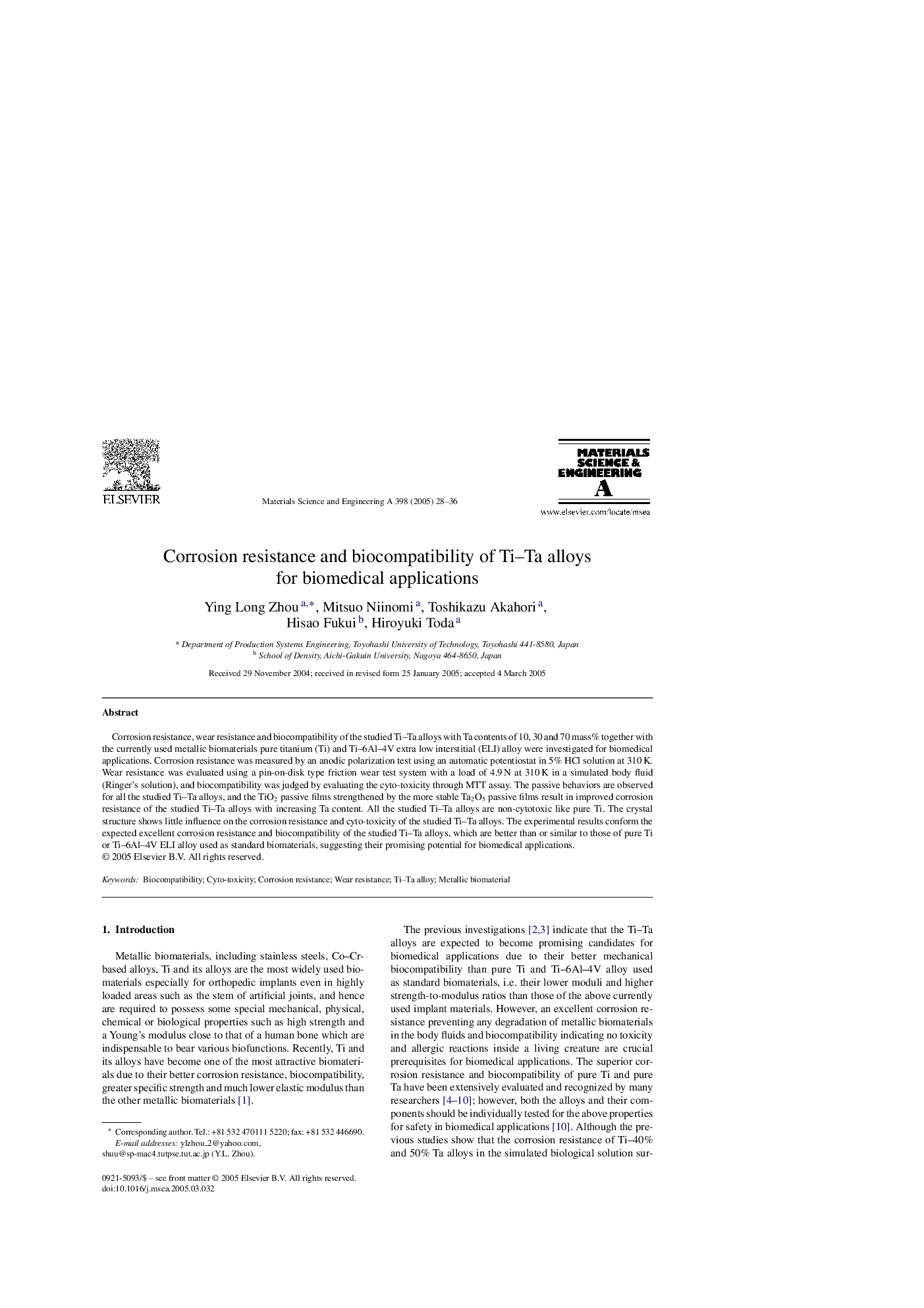| Article ID | Journal | Published Year | Pages | File Type |
|---|---|---|---|---|
| 9796218 | Materials Science and Engineering: A | 2005 | 9 Pages |
Abstract
Corrosion resistance, wear resistance and biocompatibility of the studied Ti-Ta alloys with Ta contents of 10, 30 and 70 mass% together with the currently used metallic biomaterials pure titanium (Ti) and Ti-6Al-4V extra low interstitial (ELI) alloy were investigated for biomedical applications. Corrosion resistance was measured by an anodic polarization test using an automatic potentiostat in 5% HCl solution at 310Â K. Wear resistance was evaluated using a pin-on-disk type friction wear test system with a load of 4.9Â N at 310Â K in a simulated body fluid (Ringer's solution), and biocompatibility was judged by evaluating the cyto-toxicity through MTT assay. The passive behaviors are observed for all the studied Ti-Ta alloys, and the TiO2 passive films strengthened by the more stable Ta2O5 passive films result in improved corrosion resistance of the studied Ti-Ta alloys with increasing Ta content. All the studied Ti-Ta alloys are non-cytotoxic like pure Ti. The crystal structure shows little influence on the corrosion resistance and cyto-toxicity of the studied Ti-Ta alloys. The experimental results conform the expected excellent corrosion resistance and biocompatibility of the studied Ti-Ta alloys, which are better than or similar to those of pure Ti or Ti-6Al-4V ELI alloy used as standard biomaterials, suggesting their promising potential for biomedical applications.
Related Topics
Physical Sciences and Engineering
Materials Science
Materials Science (General)
Authors
Ying Long Zhou, Mitsuo Niinomi, Toshikazu Akahori, Hisao Fukui, Hiroyuki Toda,
